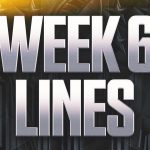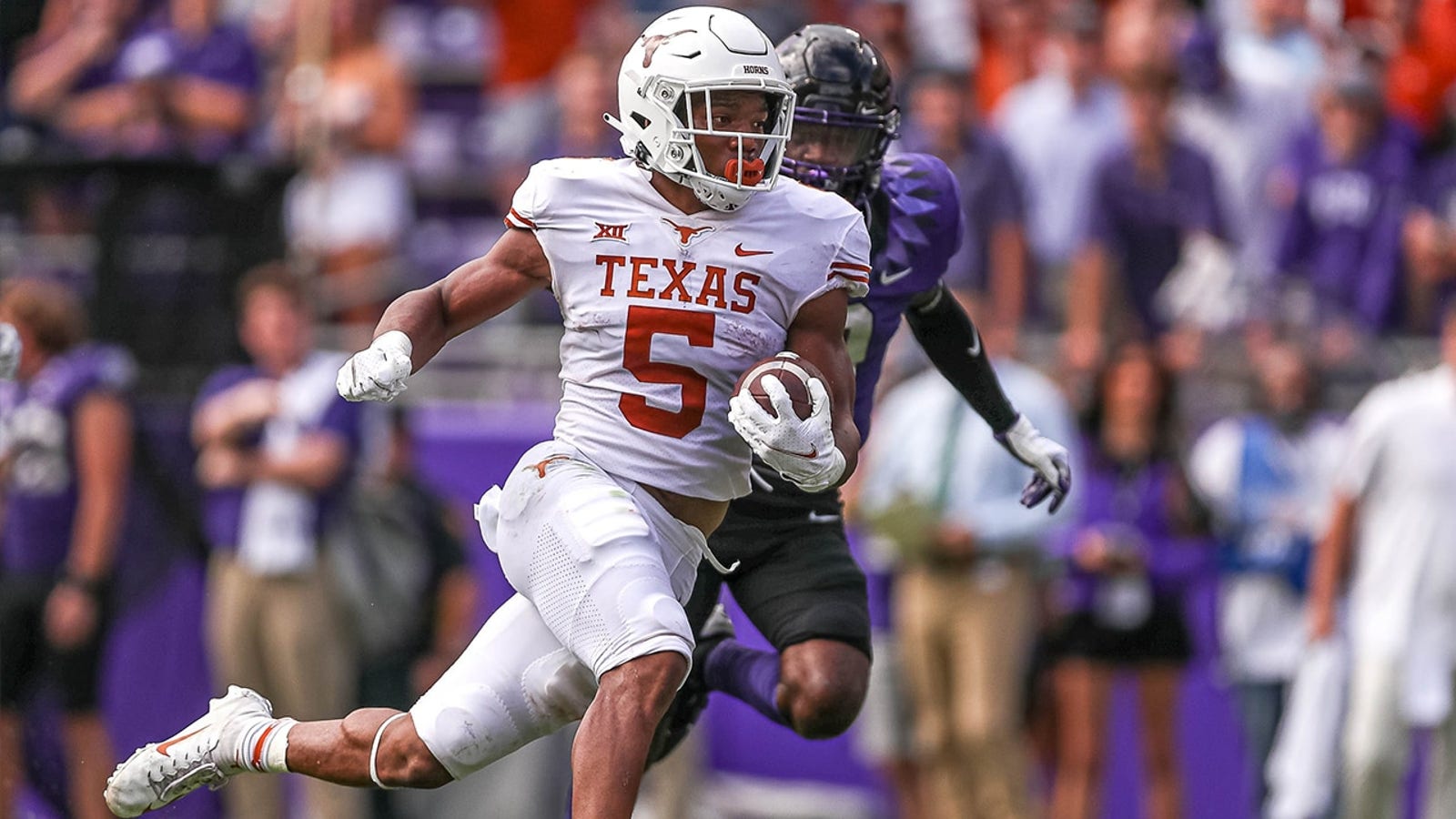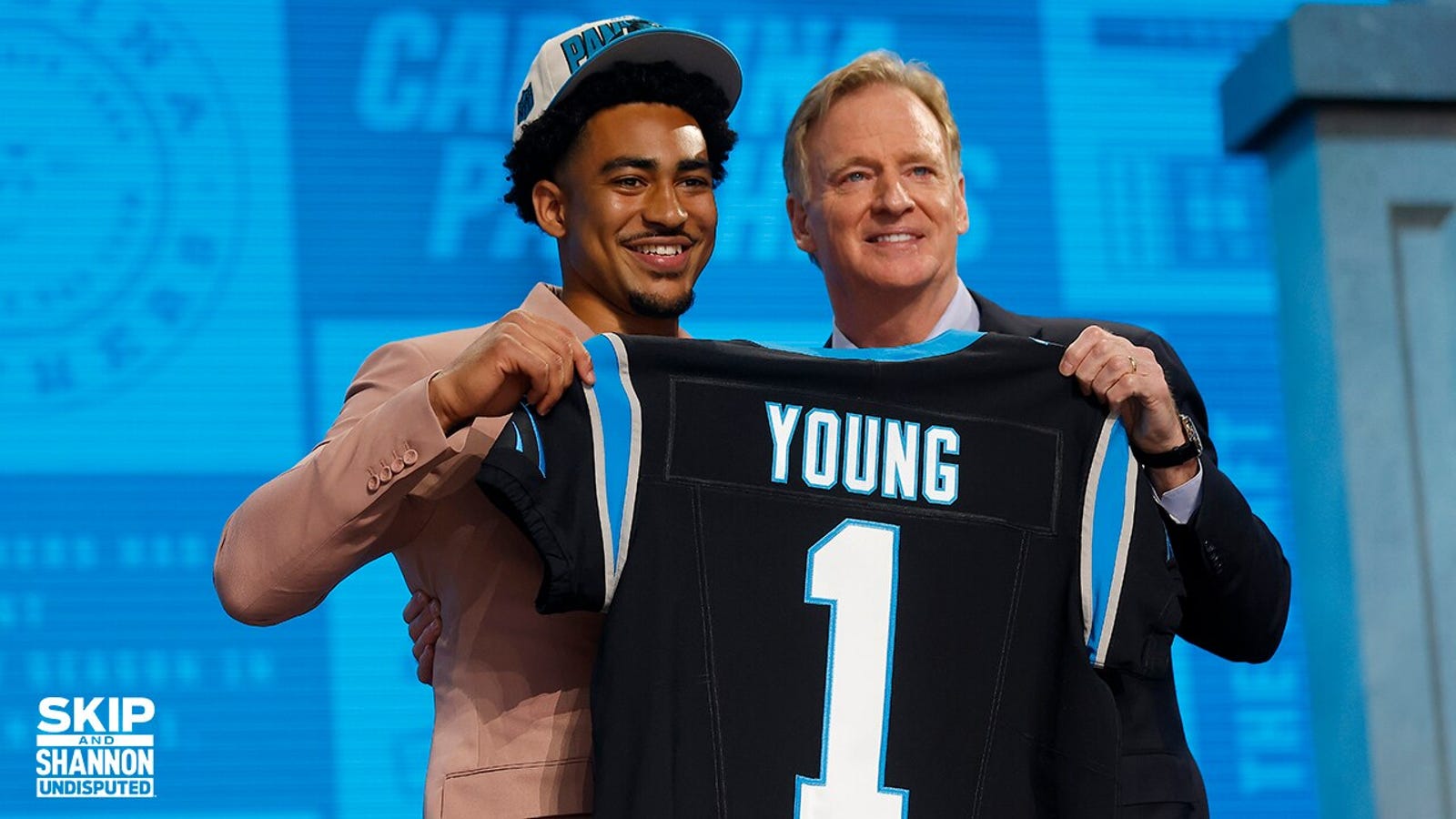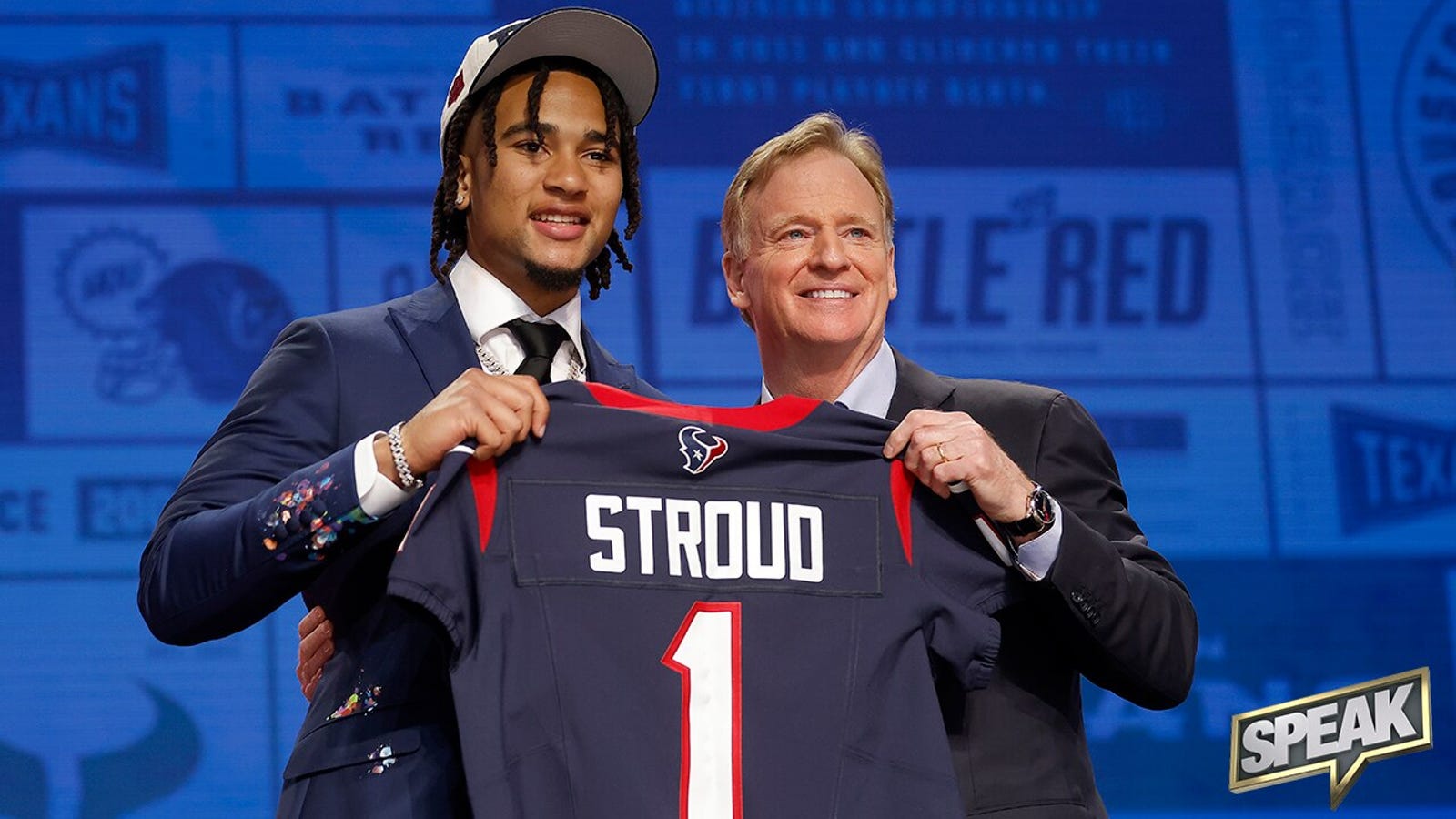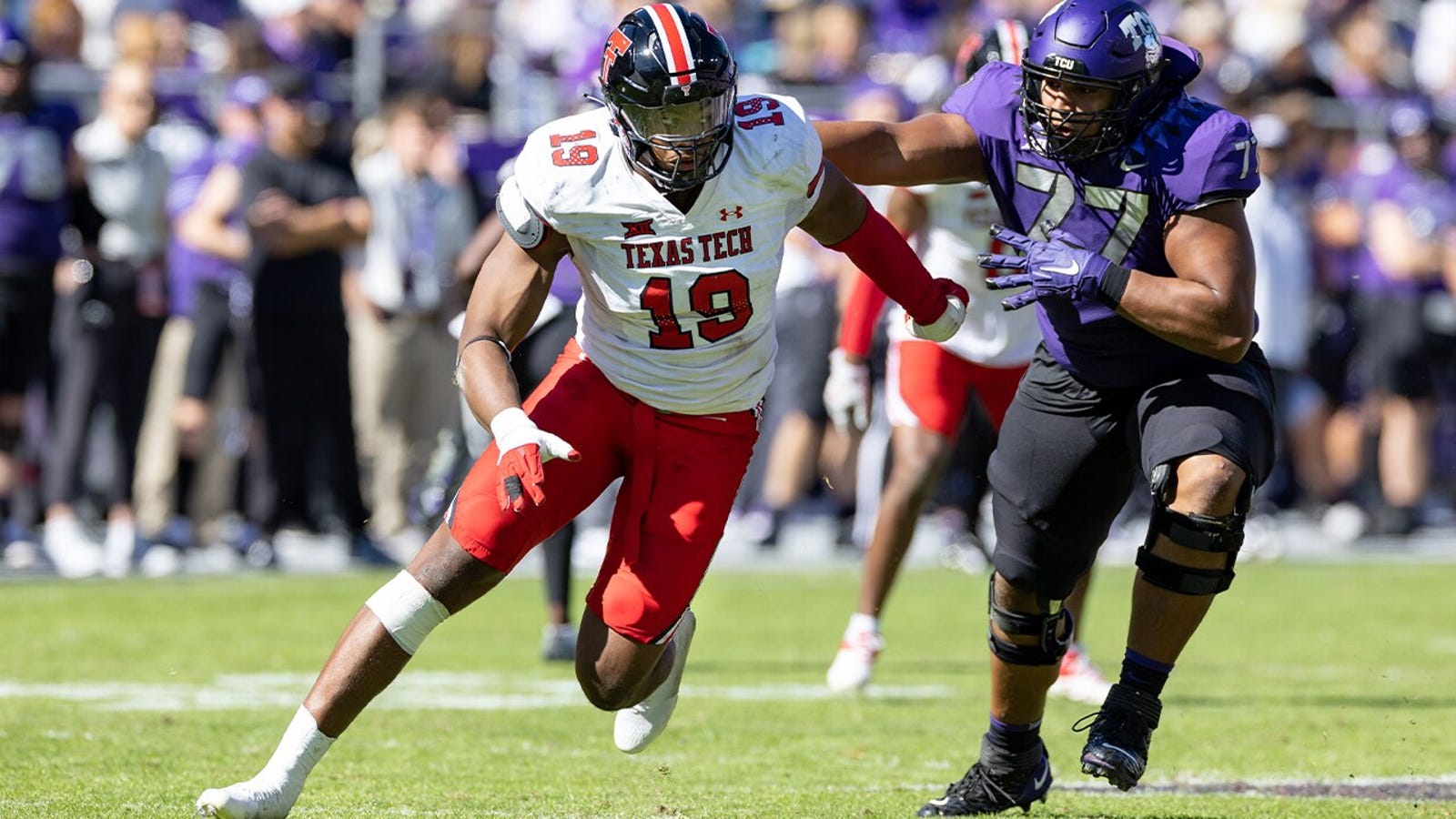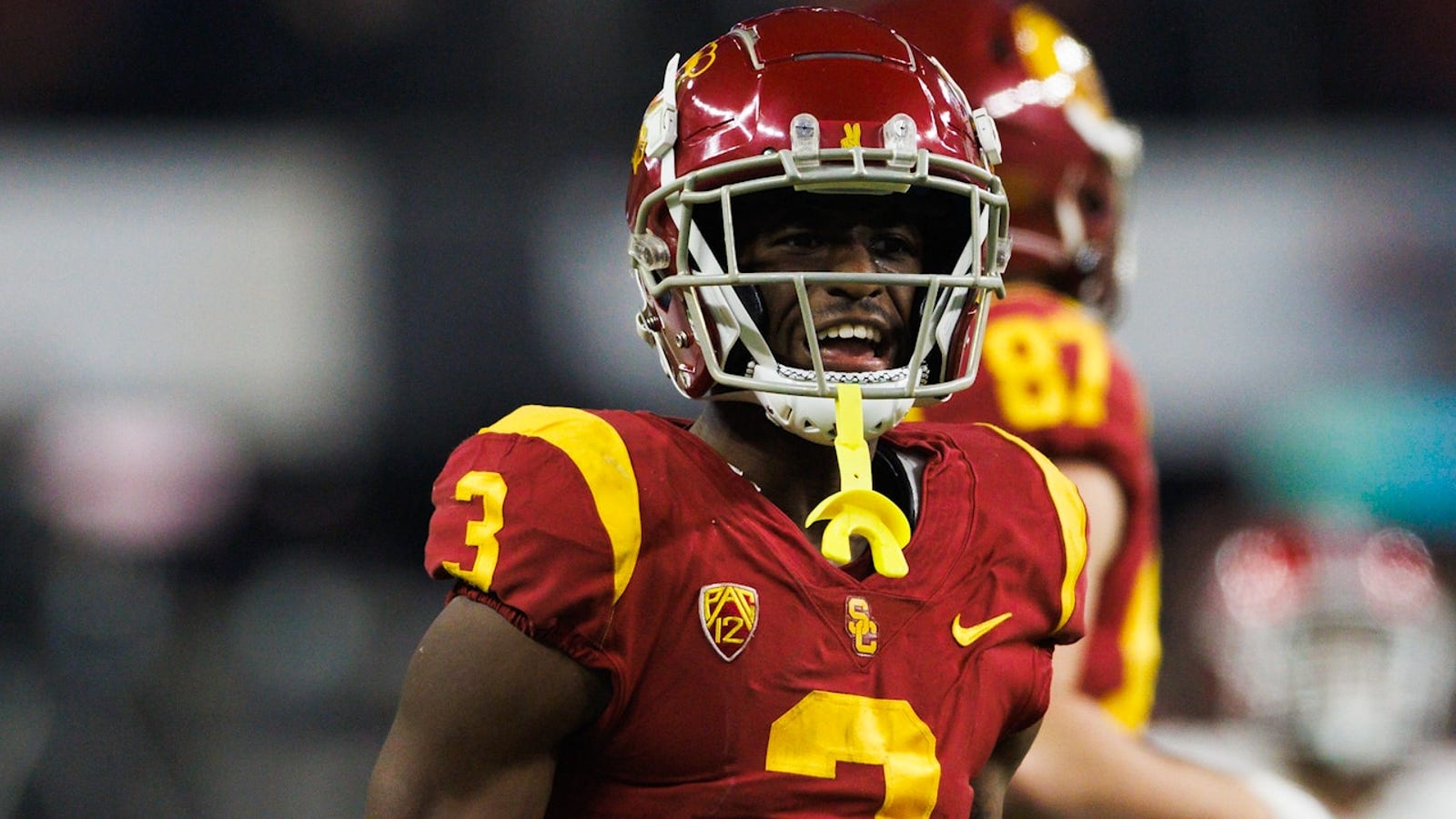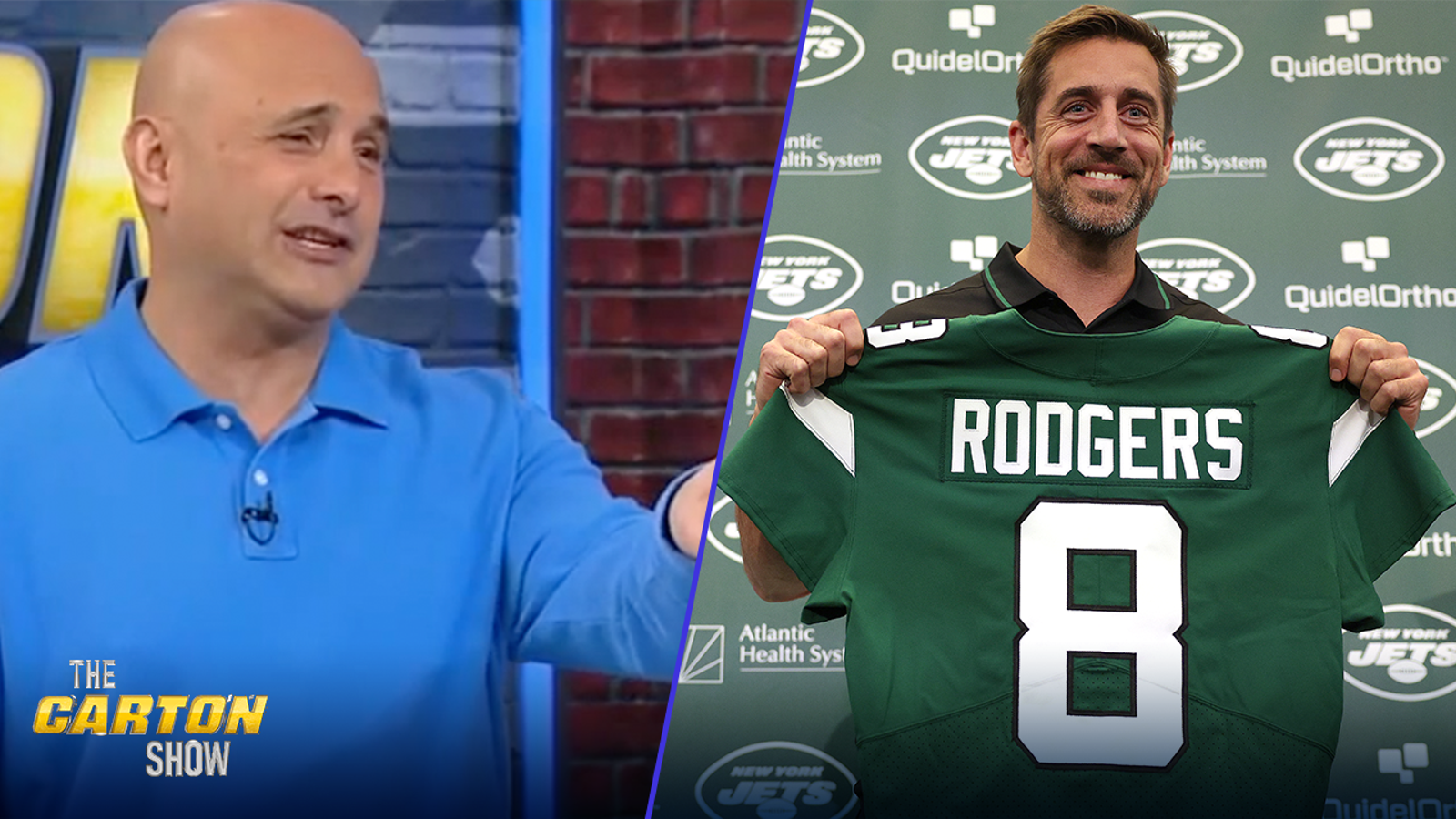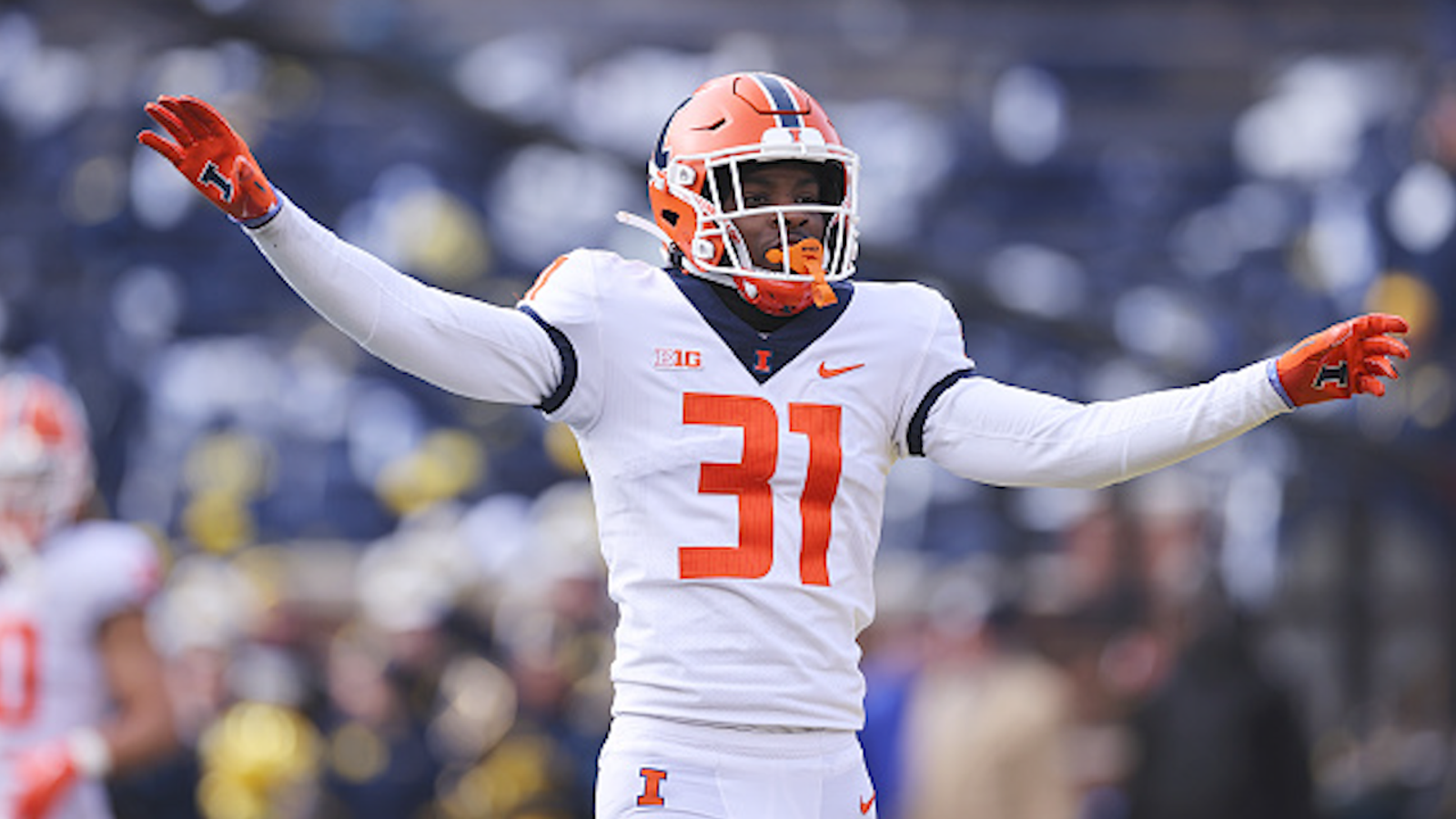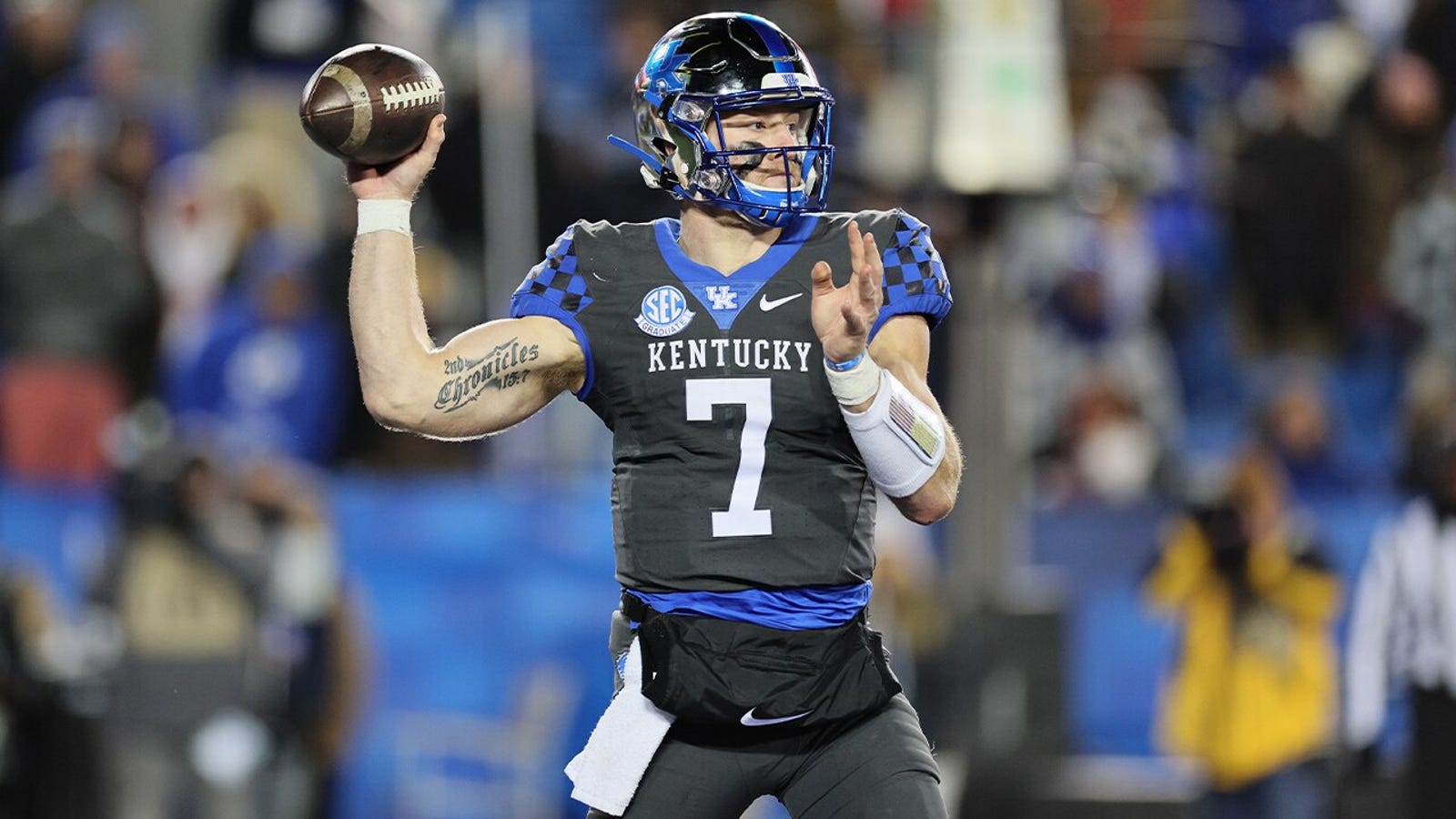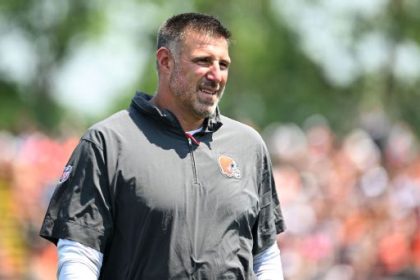FOX Sports NFL Staff
The 2023 NFL Draft is over. The league’s 32 franchises selected 259 players, from Bryce Young to Desjuan Johnson. It’s too early to jump to broad conclusions about how well each team did, but our writers broke down the league’s draft classes and added analysis based on where players were drafted relative to analysts’ expectations — as well as how well teams did in addressing their needs.
Arizona Cardinals: A-minus
Cardinals GM Monti Offsenfort made four trades in his first time running a draft, netting nine players while also picking up four picks, including a first rounder from Houston, for next year’s draft. For a team in full prebuilding mode, adding talent while also securing future picks for the acquisition of new players made it a productive and impactful draft for Arizona. First-round selection Paris Johnson Jr. improves Arizona’s pass protection for Kyler Murray. B.J. Ojulari adds juice for a Cardinals pass rush that lost J.J. Watt (retired) and Zach Allen (signed with Denver Broncos in free agency). WR Michael Wilson gives Murray another big target on the perimeter. —Eric D. Williams
Atlanta Falcons: C-plus
Having the league’s No. 3 run game and using a top-10 pick on running back Bijan Robinson is bold, but also seems neglectful of more obvious needs. Their pass rush should have been a priority, and third-rounder Zach Harrison feels like a half-measure. Did they need to trade up to 38 for guard Matthew Bergeron? Keep in mind they also got corner Jeff Okudah by dealing a fifth-rounder, so there’s impact there. —Greg Auman
Baltimore Ravens: B-plus
You closed a quarter-billion-dollar deal to keep Lamar Jackson hours before the draft, so you could draft nearly anyone and it’s still a good weekend. Leading with Zay Flowers (after landing Odell Beckham) makes life easier for Jackson and new OC Todd Monken, and linebacker Trenton Simpson is solid for a third-rounder. Stealing USC lineman Andrew Voorhees in the seventh round, knowing he’s lost for the year to a torn ACL, feels like a bargain start to their 2024 draft. —Auman
ADVERTISEMENT
In the first round, the Bills went after a creative and compelling solution to their offensive problems: tight end Dalton Kincaid. He is a big slot threat in the offense and a cross between a receiver and tight end.
“That TE is awesome. He can be their version of Travis Kelce. Great pick,” an NFL passing-game coordinator told me.
If Kincaid develops into the Kelce of this offense, then this pick will be a coup. Even if he ends up more like a Zach Ertz, that would be a great selection for quarterback Josh Allen, who desperately needed another reliable pass-catcher.
The draft continued to Day 2 on a positive note with guard Cyrus O’Torrence, a mauler of incredible size (6-foot-5, 330 pounds), in the second round. Then things went against the grain in the third round when they took linebacker Dorian Williams. It made plenty of sense — until Bills GM Brandon Beane revealed he planned to use Williams as a weakside linebacker, rather than inside where they need help replacing Tremaine Edumunds. That made the pick a headscratcher.
On Day 3, the Bills finished with fifth-round receiver Justin Shorter, who is actually bigger than most receivers in this draft at 6-foot-4 and 230 pounds. Buffalo took Ole Miss guard Nick Boeker and Oregon State cornerback Alex Austin in the seventh round. —Henry McKenna
Points for being ambitious and paying a hefty price to move up to No. 1 for quarterback Bryce Young, taking control of the draft. But second-round WR Jonathan Mingo felt like a reach, and third-round edge DJ Johnson had nine sacks in six years of college football. This draft will ultimately be judged based on whether they correctly identified Young as the best of this year’s quarterbacks. The rest is just a footnote.– Auman
Panthers select QB Bryce Young 1st overall in the 2023 NFL Draft
When asked what the pick of Bryce Young meant for the organization, Panthers owner David Tepper said “Super Bowls.” Skip Bayless and Shannon Sharpe react to Bryce Young going first overall.
Chicago Bears: A-minus
I spent a lot of time talking about how former offensive lineman and current general manager Ryan Poles could wait to get a tackle given his evaluation acumen for the position, but the Bears didn’t take any chances. They went into the draft wanting Tennessee’s Darnell Wright and they got him. He’ll likely round out the offensive line at right tackle, giving Fields a solid bubble of protection as the Bears try to evaluate him and his future with the franchise.
My favorite pick of the draft for the Bears, though, may be Miami cornerback Tyrique Stevenson. He’s an incredibly smart player who tries to isolate receivers and can anticipate their options and routes. If that doesn’t work, he’s big, fast and long at 6-foot and nearly 200 pounds, and can play physical to get his hands on the ball one way or the other. —Vitali
Here’s to simplicity: no trades — as usual for the Bengals — with just a pick each round, hitting on key needs. Myles Murphy at 28 shows off the depth of the edge prospects in this draft, and third-day picks like receiver Charlie Jones and running back Chase Brown were super-productive in the Big Ten. Princeton’s Andrei Iosavis’ athletic measurables are off the charts as well. —Greg Auman
Cleveland Browns: B-plus
Thanks to trades for Deshaun Watson and Elijah Moore, they didn’t pick until the third round (74), so they really had to hit in the mid-rounds for this draft to be worth anything. And it looks like they did. They could get a steal at 74 with WR Cedric Tillman, if only he could stay healthy. They got a good, huge, run-stuffing DT in Siaki Ika with their other third-round pick. And in the fourth they landed a massive (6-8, 374) right tackle in Dawand Jones. Sixth-round C Luke Wypler could be a steal, too. The Browns did very well with what they had. —Ralph Vacchiano
Dallas Cowboys: B-minus
To borrow from baseball, the Cowboys opted to hit a single every time they stepped to the plate. You’re not going to find many jersey sellers in this draft class, and there’s not much in the way of eye-popping highlights. That’s what happens when a nose tackle is the first-round pick and there aren’t any other bonafide starters in the class. For the most part, the Cowboys made a concerted effort to beef up their depth in the trenches, with the aim of developing guys down the line.
Tight end Luke Schoonmaker has more potential than he’s getting credit for, and running back Deuce Vaughn is a fun addition late on Day 3. To be fair to the Cowboys, an unsexy draft can still be a great draft, so long as they’re right about their projections. It’s no use getting guys on base if you don’t drive any runs home. —David Helman
Denver Broncos: C-minus
They gave up their top pick for Sean Payton, but using their first selection on receiver Marvin Mims was surprising. Third-round linebacker Drew Sanders was seen as a potential first-rounder, so there’s value there. This draft also meant they’ve gone four straight years not taking an OL in the first two rounds. As a small bonus, Payton got tight end Adam Trautman from his old Saints in a pick swap, who could be a steal. –Auman
Detroit Lions – B-plus
If you don’t look at where each prospect was taken, the draft in totality was solid. First pick Jahmyr Gibbs was a head scratcher until the team traded away D’Andre Swift on Saturday. The team also filled needs in the secondary and tight end with players who should contribute right away, especially Iowa tight end Sam LaPorta. Quarterback Hendon Hooker was a sneaky good value in the third round. He’ll be under no pressure to start right away and the Lions can figure out how much longer they want to be tied to Jared Goff over the next couple seasons. —Carmen Vitali
It wasn’t the petty draft I would have hoped for, but the Packers took Lukas Van Ness out of Iowa at No. 13 overall with the intention of playing him inside rather than on the edge. That alone makes me feel better about them not selecting a pass catcher in the first round, though it means Green Bay will field eight first-round picks on the defensive side of the ball alone this coming season. The defense is out of excuses.
Clearly, taking a receiver at No. 13 was too rich this year — Jaxon Smith-Njigba didn’t come off the board until No. 20. But Green Bay did address pass catchers on Day 2, taking two tight ends and a wide receiver. Jayden Reed out of Michigan State may actually be my favorite of the picks for the way he can complement the Packers’ other young wideouts. —Vitali
Houston Texans: B-plus
On paper, the Texans have one of the NFL’s best draft classes at the top. They addressed several needs. Anderson was expensive to trade up for — Houston gave up five picks, including next year’s first-round selection, to move up from No. 12 to 3 — but he might be the best overall player in this draft class, and the team gets to pair him with its potential quarterback of the future in Stroud. —Ben Arthur
Houston Texans amongst the biggest winners of the 2023 NFL Draft
The Houston Texans selected C.J. Stroud with the No. 2 pick and traded up to No. 3 to draft Will Anderson Jr. The “Speak” crew share their biggest winners & surprises from the first round of the NFL Draft.
Indianapolis Colts: A-minus
The Colts entered the draft needing to address quarterback (duh), receiver, cornerback and offensive line, and they did so. But what stands out the most is the athleticism of Indianapolis’ draft class.
The Relative Athletic Score (RAS) metric takes a player’s NFL combine measurables and breaks it down into one number, on a scale of 0 (lowest) to 10 (highest). Each of Indianapolis’ 12 draft picks scored at least 8.48. Anthony Richardson had a perfect score. —Arthur
Jacksonville Jaguars: B-minus
It’s surprising that it took the Jaguars until the fourth round to address the pass rush (Jacksonville had just 35 sacks last season, tied for 25th in the NFL). But accumulating 12 draft picks for an already good team is impressive — there’s plenty of potential for strong depth — and they’ve certainly fed into their strength: the Trevor Lawrence-led offense. With its first three picks, Jacksonville took an offensive tackle, tight end and running back who should all play key roles as rookies. —Arthur
Felix Anudike-Uzomah was a good grab for the Chiefs at the top of the draft. Replacing Frank Clark should be on the top of the priorities list, and the 2022 Big 12 Defensive Player of the Year was a productive pass rusher at Kansas State, with 19.5 sacks and eight forced fumbles across the last two seasons.
Rashee Rice seems like a reach in the second round, but it’s important for Kansas City to address the receiver position as long as Patrick Mahomes is around. —Arthur
Las Vegas Raiders: C-plus
It’s hard to argue with edge rusher Tyree Wilson at 7, except that the Raiders still don’t have the young QB Josh McDaniels wants to build around. They could’ve used help on the O-line and at CB, too. Instead, they traded a fifth-round pick to move up in Round 2 for TE Michael Mayer. He may be the best TE in the draft, but he’s also somewhat redundant after they signed Austin Hooper and O.J. Howard in free agency. And their two third-rounders (DT Byron Young, WR Tre Tucker) were over-drafted depth players based on most analysts’ assessment. —Vacchiano
Los Angeles Chargers: B-minus
The Bolts drafted another big-bodied receiver in the first round, TCU product Quentin Johnston. He’s got good short area quickness and should provide an ability to make plays after the catch. USC pass-rusher Tuli Tuipulotu led the nation in sacks last year and offers versatility, with the ability to play defensive tackle and defensive end. A converted receiver, Washington State linebacker Daiyan Henley brings athleticism and energy to the defense while TCU product Max Duggan should compete for a backup job behind Justin Herbert. The Bolts drafted three TCU products overall, including electric receiver/returner Derius Davis. However, the Chargers surprisingly did not draft a running back despite Austin Ekeler requesting a trade and entering the final year of his contract. —Williams
The Rams had several needs to fill, particularly on the defensive side, where Aaron Donald is one of the few starters sticking around. Tennessee edge rusher Byron Young should help replace the production left vacant by the departure of Leonard Floyd. TCU product Steve Avila helps bolster an offense that started 14 different offensive-line combinations in 2022. Georgia quarterback Stetson Bennett should be a solid backup for the aging Matthew Stafford.
The Rams had 13 picks in all and need players all over their roster after basically sitting out free agency due to salary cap restraints. Los Angeles also got this year’s Mr. Irrelevant, Toledo defensive tackle Desjuan Johnson. After Brock Purdy’s emergence, there will be more expected out of Johnson than perhaps is fair. —Williams
Miami Dolphins: B-plus
The Dolphins had just four picks and their top selection came at 51st overall where they took cornerback Cam Smith. It seems crazy, at first, given their tandem of Jalen Ramsey and Xavien Howard. But if you go back and look at how injuries devastated this team, you’ll see why the Dolphins went after an excess of cornerbacks this offseason. Smith is an outstanding cover corner and should be reliable if called upon.
Mike McDaniel, then — I’m imagining — told GM Chris Grier to get the fastest running back in this draft class. Texas A&M RB Devon Achane fell to Miami in the third round, where his speed (4.32-second 40-yard dash) almost feels ho-hum in the company of Tyreek Hill and Jaylen Waddle. But that’s the point. This offense is a track team that can deliver hits.
In Rounds 6 and 7, Miami picked Stanford receiver Elijah Higgins and Michigan tackle Ryan Hayes. —McKenna
Minnesota Vikings: C-plus
Considering the Vikings came into the draft with just five total picks, this was never going to be a splashy draft. Through some maneuvering, general manager Kwesi Adofo-Mensah ended up making six total selections, but only one of those came in the top 100. The Vikings did add a dynamic playmaker in USC wide receiver Jordan Addison at No. 23 overall to complete a wideout trifecta with Justin Jefferson and KJ Osborn. They have the benefit of T.J. Hockenson in the receiving game, as well.
The biggest indication of head coach Kevin O’Connell’s confidence in Kirk Cousins came in the fact that Minnesota waited until pick No. 164 to take quarterback when they selected Jaren Hall out of BYU. Don’t overlook the fact that they took LSU cornerback Jay Ward to kick Day 3 off. He gets to reunite with his former coach at LSU, Daronte Jones, who is now on Minnesota’s staff. I wouldn’t be shocked if they end up getting a starter out of the fourth round. —Vitali
New England Patriots: B-plus
Cornerback Christian Gonzalez might just be the best athlete Bill Belichick has ever coached at cornerback. And that’s saying something, given the coach has worked with Ty Law and Stephon Gillmore, among others. So for the Patriots to get Gonzalez at 17 after trading back? That’s just awesome.
They then took Georgia Tech defensive end Keion White in the second round. He’s another elite athlete with a lot of potential. The good news is that he won’t have to rush onto the field, with the Patriots fairly deep on the edge.
New England finished the draft with a total of 12 — TWELVE! — prospects. They took three cornerbacks, one defensive lineman, one inside linebacker, two receivers, three interior offensive linemen, one kicker and one punter.
What they didn’t take? A tackle. That’s the lone need they didn’t fill. —McKenna
New Orleans Saints: C-plus
Addressing the defensive front was the right move, though first-rounder Bryan Bresee feels like better value than second-round pick Isaiah Foskey. Trading up for offensive lineman Nick Saldiveri made sense as an aggressive start to Saturday, and fourth-round QB Jake Haener is a smart passer who can just learn from fellow Fresno State alum Derek Carr for a year. The top pick in this draft was used to get Chris Olave last year, so you can factor that in as well. —Auman
New York Giants: A-minus
GM Joe Schoen came into the draft needing a starter at cornerback, center and wide receiver, and he picked them all off in the first three rounds. He even got aggressive, trading up a spot for first-round CB Deonte Banks and up 16 spots in Round 3 for Tennessee’s game-breaking WR, Jalin Hyatt. Adding Hyatt and C John Michael Schmitz helped complete the offseason transformation of the offense that had been a problem for years. And he got some future insurance for Saquon Barkley in fifth-round RB Eric Gray, too. —Vacchiano
The Jets seemed to stay true to their board — and I know that because they clearly didn’t go after positions of need. They took Iowa State edge Will McDonald IV in Round 1. He’s a good player, one who they’ll add to their deep cast of pass-rushers. In the second round, the Jets took Wisconsin center Joe Tippmann, who will compete against recently re-signed veteran Connor McGovern.
Finally, they addressed their biggest need in the fourth round with Pittsburgh tackle Carter Warren, but I’m not sure he’ll see the field in Year 1. He’ll need time to learn how to better apply the fundamentals to his impressive athleticism. To finish out the draft, they took Pittsburgh running back Israel Abanikanda (fifth round), Western Michigan outside linebacker Zaire Barnes (sixth), LSU cornerback Jarrick Bernard-Converse (sixth) and Old Dominion tight end Zack Kuntz (seventh). —McKenna
Aaron Rodgers says he’s ‘not a savior’ for Jets
Craig Carton is joined by Greg Jennings to share their thoughts on some of Aaron Rodgers said in his first Jets press conference. Watch as they decide whether they buy Rodgers’ claim that he’s ‘not the savior’ for the Jets, and whether he can bring a second Super Bowl trophy home to New Jersey.
Philadelphia Eagles: A-plus
Is there a grade higher than A-plus? GM Howie Roseman gets one of the best players in the draft at No. 9 (DT Jalen Carter), a potential top-10 pick at 30 (Edge Nolan Smith) and a potential first-round CB in the fourth round (Kelee Ringo). Plus, he trades for RB D’Andre Swift, the pass-catching back his team needed. He basically raided the best program in college football (Georgia) and it reinforced the Eagles as the team to beat in the NFC. —Vacchiano
Pittsburgh Steelers: B-plus
Pittsburgh head coach Mike Nolan made just seven picks, but they add protection up front for quarterback Kenny Pickett with the addition of offensive tackle Broderick Jones. And defensively, the addition of Joey Porter Jr., the son of Pittsburgh’s legendary pass rusher Joey Porter, should improve the team’s secondary. Pittsburgh likes to use tight ends, and Georgia’s Darnell Washington is physical playmaker who will be a tough matchup on game days in the red zone. Wisconsin defensive tackle Keeanu Benton has the athletic traits to develop into a productive interior pass rusher. —Williams
San Francisco 49ers: C-plus
The 49ers had no picks in the first and second round this year and made nine picks overall. Penn State safety Ji’Ayir Brown should compete for time in the secondary and tight end Cameron Latu adds another pass catcher to San Francisco’s uber-talented offense. With Robbie Gould too expensive to bring back in free agency, the selection of Michigan kicker Jake Moody raised eyebrows. San Francisco selecting a kicker in the third round is the highest a kicker has been taken in the draft since the Tampa Bay Buccaneers took Roberto Aguayo in the second round of the 2016 draft.
That did not go well for the Bucs. However, the 49ers had three third-round picks and might not have gotten Moody if they waited until Day 3. And while there are concerns with drafting a kicker that high, it’s all good if he plays well, and Moody was excellent in college. —Williams
Seattle Seahawks: B-plus
For a second straight season, it appears Seattle drafted a handful of difference-makers to improve their roster. Cornerback Devon Witherspoon plays fast and physical. The Illinois product should improve an already good secondary that includes Pro Bowlers Tariq Woolen and Quandre Diggs. Receiver Jaxon Smith-Njigba gives Seattle another playmaker to work the middle of the field and UCLA running back Zach Charbonnet provides another physical runner to pair with Ken Walker III. The Seahawks also added a pass-rusher in Auburn outside linebacker Derick Hall. —Williams
Tampa Bay Buccaneers: B-minus
There’s promising speed all over, from the trenches and top pick Calijah Kancey to receiver Trey Palmer late. Second-round guard Cody Mauch is as colorful a prospect as you’ll find. Tampa Bay used the third day to upgrade depth on both sides of the ball. Even undrafted running back Sean Tucker from Syracuse looks like someone who could crack their 53. —Auman
Tennessee Titans: C-plus
The Titans focused on offense as they needed to — all six selections addressed that side of the ball, in fact — but it’s a head-scratcher that they waited until their last pick, in the seventh round, to address arguably their biggest need: wide receiver. Colton Dowell might not even make the team. Tennessee still has a lot of work to do at that position. —Arthur
Washington Commanders: B-minus
The Commanders took some chances, starting with a 166-pound CB in Round 1 (Emmanuel Forbes). If he holds up, they definitely boosted their secondary with him and second-round S Quan Martin. They also got some developmental help on the offensive line with C Ricky Stromberg (third) and G Braeden Daniels (fourth). Every pick felt just a little bit over-drafted, though. And not adding a tight end seems like an oversight. —Vacchiano
This analysis was compiled by:
AFC South reporter Ben Arthur (@benyarthur)
NFC South reporter Greg Auman (@gregauman)
Dallas Cowboys reporter David Helman (@davidhelman_)
AFC East reporter Henry McKenna (@McKennAnalysis)
NFC West reporter Eric D. Williams (@eric_d_williams)
NFC East reporter Ralph Vacchiano (@RalphVacchiano)
NFC North reporter Carmen Vitali (@CarmieV)
NFL trending
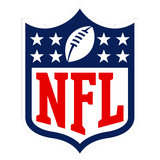
Get more from National Football League Follow your favorites to get information about games, news and more




